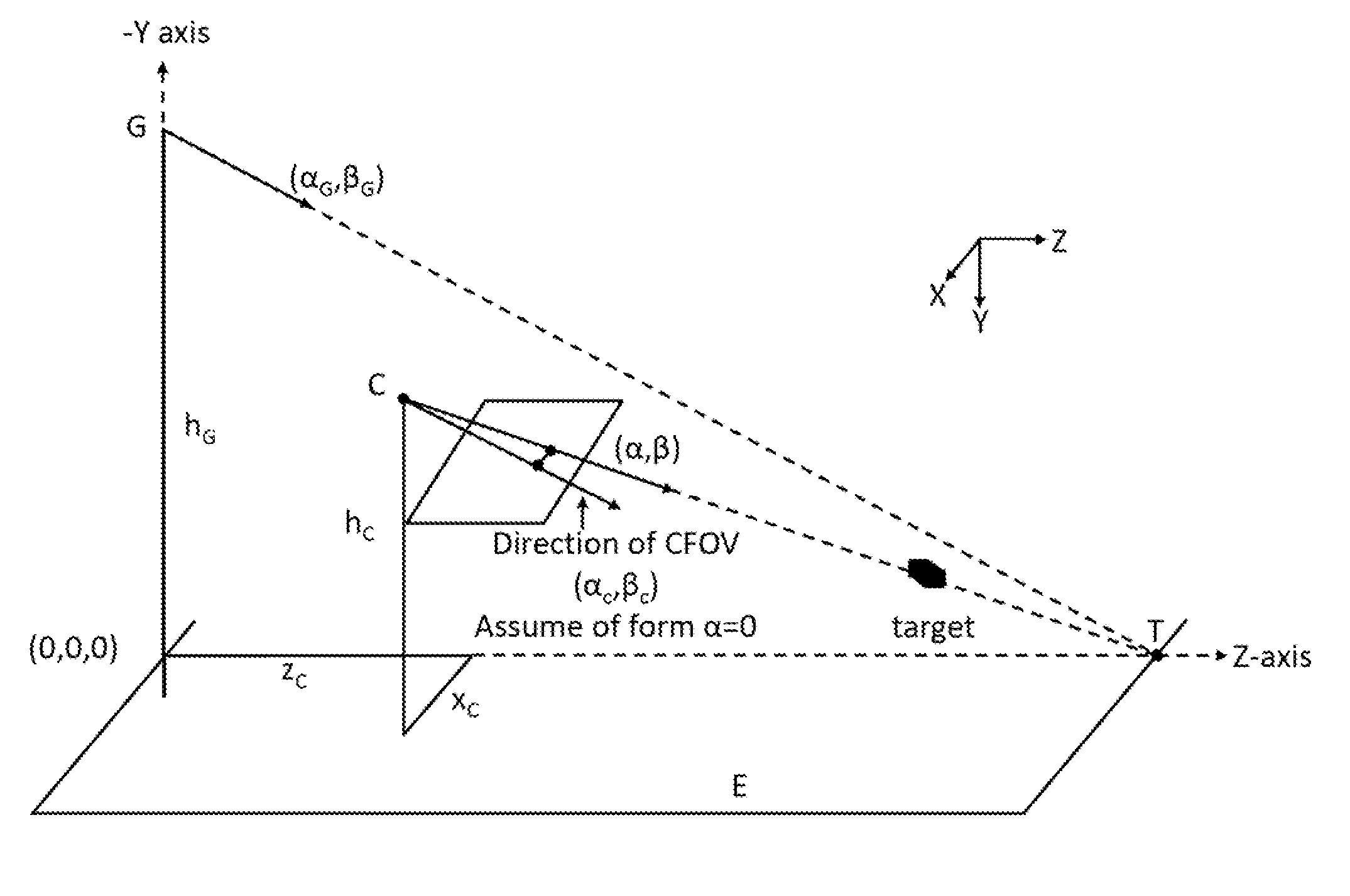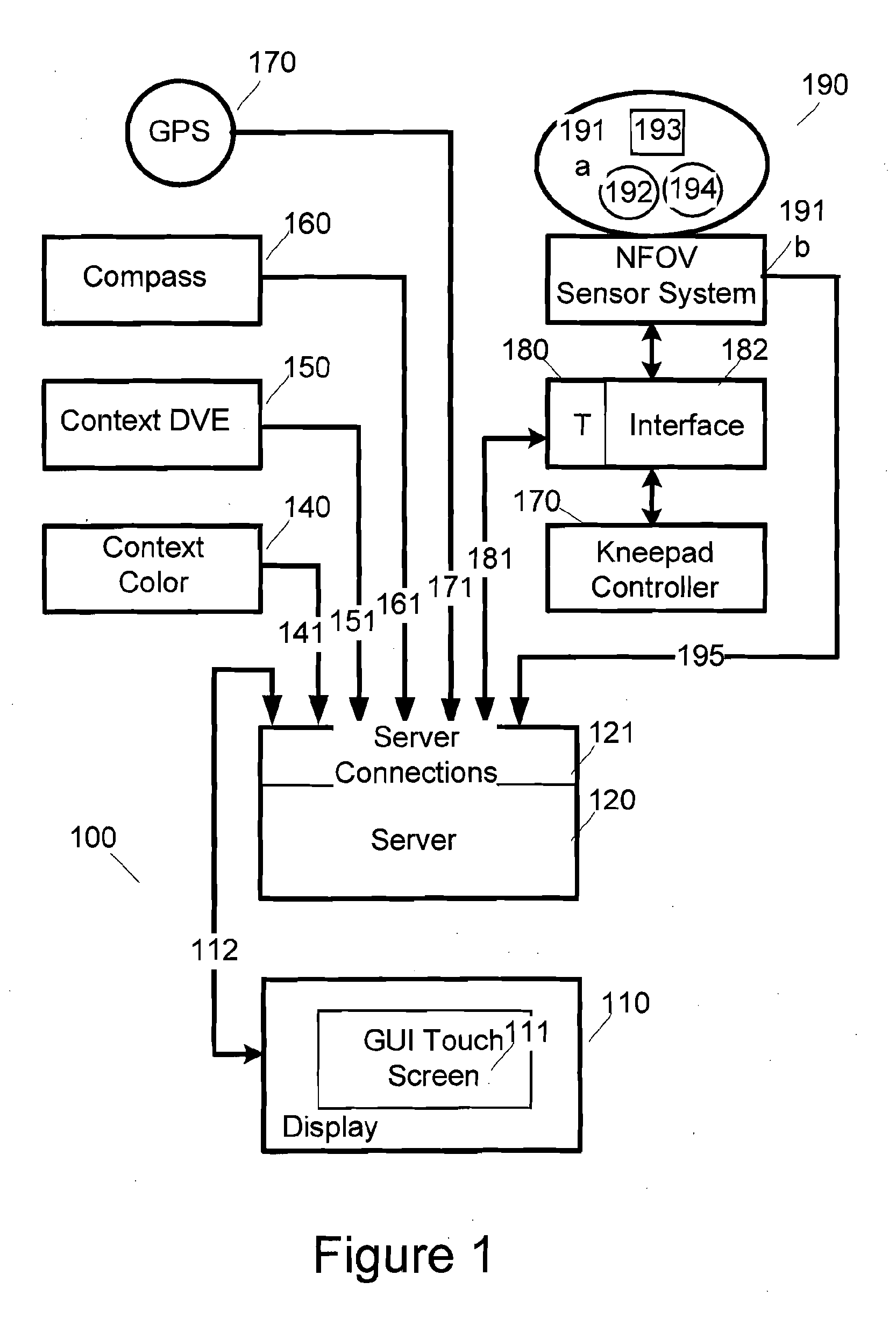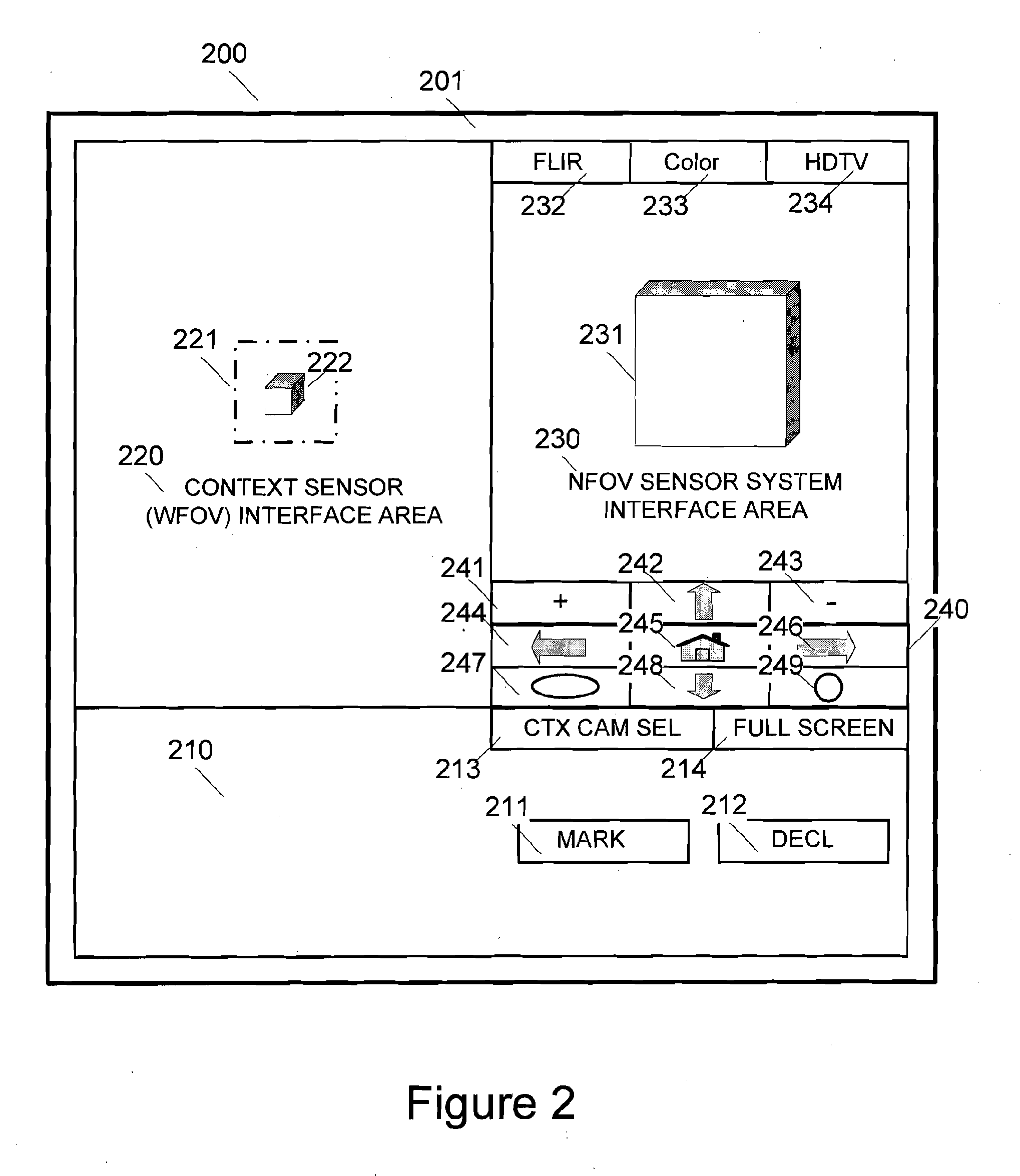Method and apparatus for identifying threats using multiple sensors in a graphical user interface
a threat and user interface technology, applied in the field of imaging and non-imaging sensors, can solve the problem that wide angle lenses do not have sufficient resolution to identify faint objects in natural background, and achieve the effect of maintaining situational awareness and context and minimizing the amount of hardware required
- Summary
- Abstract
- Description
- Claims
- Application Information
AI Technical Summary
Benefits of technology
Problems solved by technology
Method used
Image
Examples
Embodiment Construction
[0014]FIG. 1 is a block diagram of a sensor-based image processing system involving a graphical user interface. It shows how the various components of the system are linked to each other.
[0015]An exemplary GUI system 100 is based on multiple low magnification Wide Field of View (WFOV) sensors (140 and 150) and high magnification sensors in different combinations which operate to point Narrow Field of View (NFOV) sensors (192-194) at regions of interest based on a multi-axis stabilization (191b).
[0016]In order to achieve a stabilized, high magnification NFOV sensor system 190, a commercially available Gyrocam™ gimbal system was selected which has multi-axis stabilization 191b, three sensors: color visible 192, medium wave IR (MWIR) FLIR 193, and an image intensifier coupled to a CCD 194 (e.g., for digital output), and various high magnification settings for all the sensors. The Gyrocam™ gimbal system has analog signal interfaces to control movement of the gimbal head 191a, control th...
PUM
 Login to View More
Login to View More Abstract
Description
Claims
Application Information
 Login to View More
Login to View More - R&D
- Intellectual Property
- Life Sciences
- Materials
- Tech Scout
- Unparalleled Data Quality
- Higher Quality Content
- 60% Fewer Hallucinations
Browse by: Latest US Patents, China's latest patents, Technical Efficacy Thesaurus, Application Domain, Technology Topic, Popular Technical Reports.
© 2025 PatSnap. All rights reserved.Legal|Privacy policy|Modern Slavery Act Transparency Statement|Sitemap|About US| Contact US: help@patsnap.com



